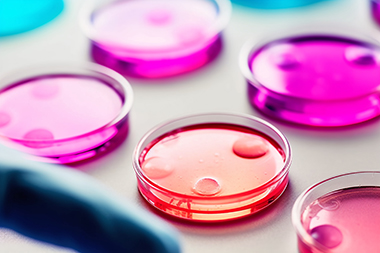Silanol groups (Si-0H) exist on the surface of glass, which can adsorb to samples such as proteins and cause sample loss. These groups can be closed by silanization, in which a silanizing reagent, Chlorotrimethylsilane(TMCSL) or Dichlorodimethylsilane(DMDCS), reacts with the carrier surface to remove the hydrogen bonding ability of the groups, thus improving the properties of the carrier surface and reducing the adsorption of the sample. This is particularly important when working with low concentrations of particularly “sticky” solutes such as single-stranded nucleic acids or proteins.

Chlorotrimethylsilane or Dichlorodimethylsilane.
Vacuum pump
Dryer
Method One.
Prepare methanol solution containing 6% Chlorotrimethylsilane or Dichlorodimethylsilane (silanizing agent);
Wash and dry the glassware (it is recommended to use potassium dichromate washing solution to soak and clean).
Pour the silanizing agent into the glassware in a fume hood and let it touch the inner surface of the glassware and stay for more than 10sec. Stirring or shaking during the process can make the reaction between silanizing agent and glass more complete and uniform.
Pour off the silanizing agent, wash off the excessive silanizing agent with methanol, dry the glassware naturally, and then heat it at 100°C for 1hr.
Method Two.
Place silanized glassware or instruments and beakers containing 1-3 m1 of TMCSL or DMDCS in a desiccator in a fume hood.
Chlorotrimethylsilane or Dichlorodimethylsilane vapors are toxic and highly flammable. A solution of about 5% Dichlorodimethylsilane(or Chlorotrimethylsilane) dissolved in a volatile organic solvent (e.g., chloroform or heptane) may also be used to briefly rinse, or to soak through, the organic solvent evaporating so that the Dichlorodimethylsilane(or Chlorotrimethylsilane) is deposited on the surface of the apparatus.
Connect the dryer to a vacuum pump until the silane begins to boil, turn off the pump connection to maintain a vacuum in the dryer until the liquid silane has evaporated (about 1-3hr)
Open the dryer in a fume hood to allow the silane vapors to dissipate.
Bake the glassware or instrument at 180°C for 2hr.
Chlorotrimethylsilane and Dichlorodimethylsilane are toxic, volatile and flammable, when using it, you should pay attention to wearing rubber gloves, overalls and protective goggles, and in an explosion-proof fume hood;
Chlorotrimethylsilane and Dichlorodimethylsilane should be protected from light and kept airtight. Long-term storage will react with water, and can be spontaneously polymerized, resulting in cloudy precipitation and reduce the active ingredients, can be filtered through the filter paper to remove the polymerization.
The glassware must be dried before reaction, can be dried at 200℃C for 15min.
When the glassware becomes hydrophilic again, it indicates that the silanization layer has been damaged and needs to be re-treated.
Disposal of waste silanizing agent: add water to the silanizing agent and dispose of it in the same way as a normal flammable liquid
Contact: Tony Li
Phone: +86-13263299644
Tel: +86-13263299644
Email: sales@ecoviaet.com
Add: No 3 Youyi Road,Tangshan,Huantai,Zibo,China
We chat
